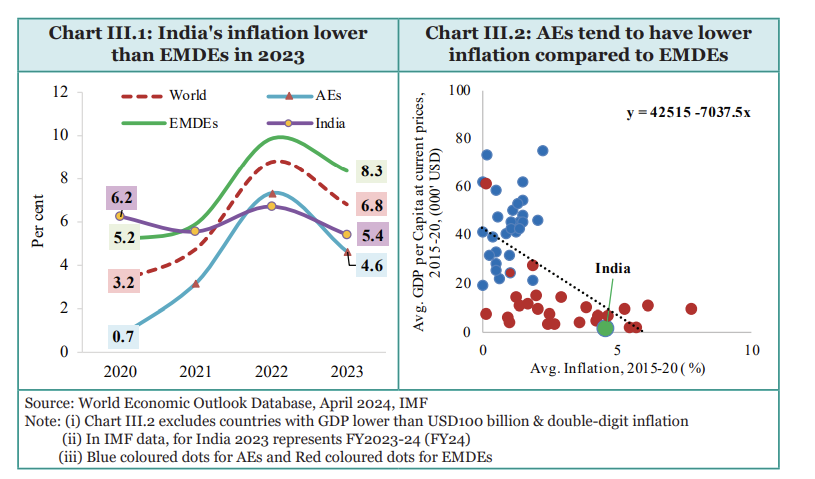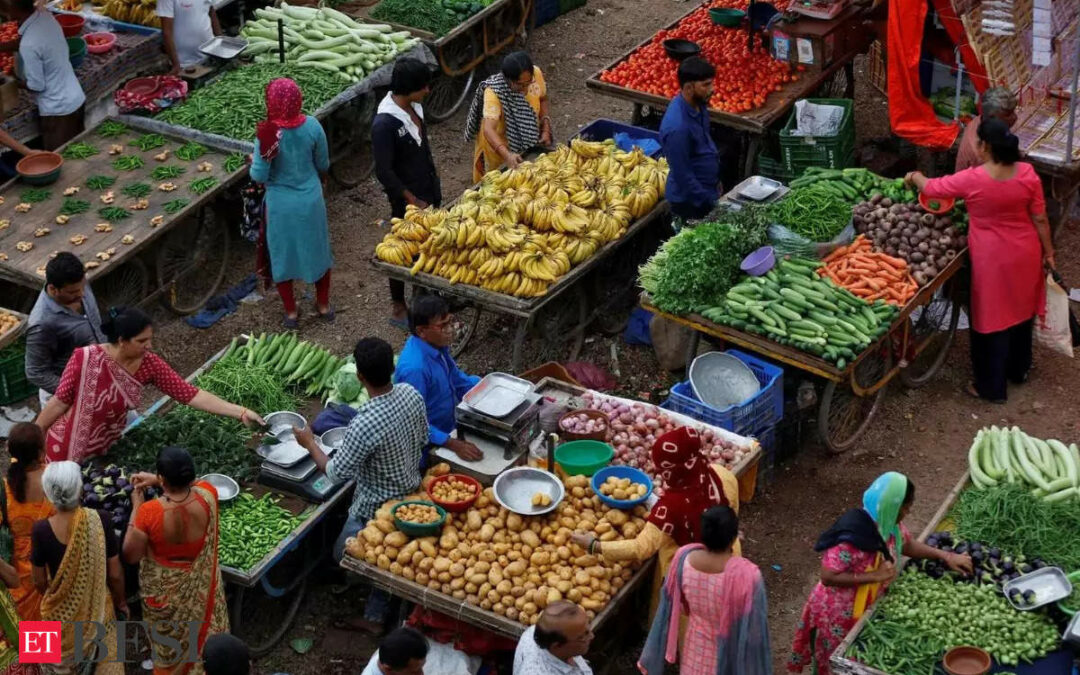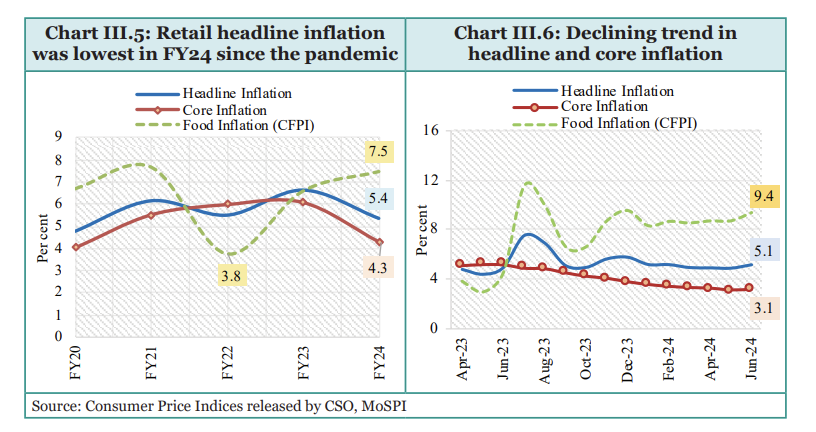Despite global economic disruptions and domestic pressures, India’s retail inflation was contained at 5.4% in FY24, marking the lowest rate since the pandemic, says the Economic Survey 2024.
India’s standing globally
The COVID-19 pandemic initially caused supply chain disruptions, and the Russia-Ukraine war exacerbated global inflation. However, a decline in global inflation was observed in the latter half of FY23 and FY24 due to diminishing energy price shocks and lower core inflation.
The International Monetary Fund (IMF) has highlighted the impact of synchronized monetary tightening by central banks in advanced economies, which has contributed to reduced energy prices.
In comparison, global average inflation stood at 6.8% from 2022 to 2023. Emerging Markets and Developing Economies (EMDEs) experienced a higher rate of 8.2%, while India’s inflation was notably lower at 5.4%.

Domestic Inflation
In FY23, CPI-based retail inflation was significantly influenced by higher food prices, although core inflation remained moderate. To address these challenges, the RBI increased the policy repo rate by 250 basis points between May 2022 and February 2023. This measure was aimed at absorbing excess liquidity and aligning inflation with the target. As a result, retail inflation for LPG and petroleum products entered the deflationary zone, driven by government price cuts and falling global energy prices.
From FY22 to FY24, the headline Consumer Price Index (CPI) showed a decline from 6.2% to 5.4%. Core inflation also decreased from 5.1% to 3.1%, while food inflation increased from 3.8% to 7.5% over the same period.
What does the government plan to do?
One significant area of focus is enhancing domestic oilseed production. The government aims to increase the production of major oilseeds, such as sunflower, rapeseed, and mustard, and explore the potential of non-conventional oils like rice bran oil and corn oil.
Additionally, there is consideration for expanding the National Mission on Edible Oils to include other major oilseeds.
Boosting pulses production is another key strategy. The government is working to expand the cultivation area of pulses, particularly lentils, tur, and urad, and promote summer cultivation of urad and moong in areas with assured irrigation facilities.
Improving storage and processing facilities is also a priority. The government is evaluating and enhancing modern storage facilities for vegetables that are prone to seasonal price surges. This includes assessing the progress and effectiveness of these facilities in stabilizing prices.
To strengthen price monitoring and data integration, the government plans to link high-frequency price monitoring data for essential food items to quantify and monitor price build-up from the farm gate to the consumer.
Additionally, efforts are underway to expedite the construction of the producer price index for goods and services to better understand cost-push inflation. The consumer price index will also be revised with fresh weights and item baskets based on the latest household expenditure surveys.












